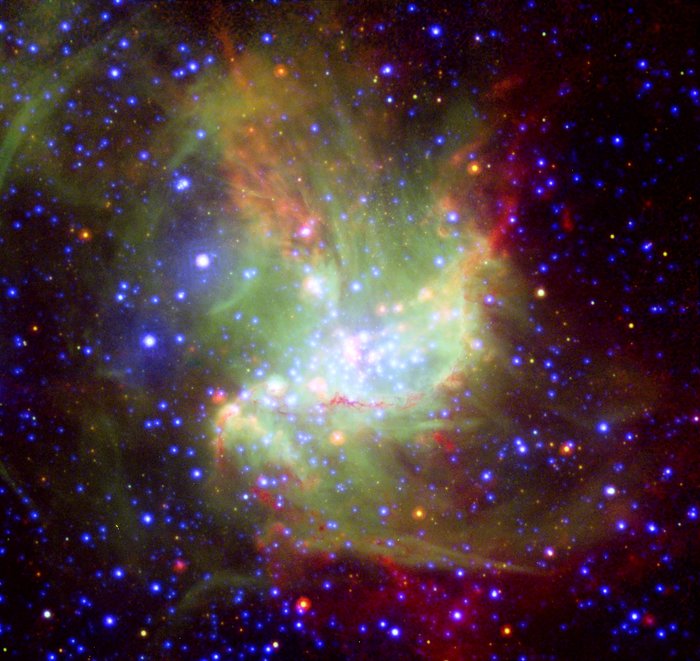Star-forming region NGC 346
This new portrait of the bright star-forming region NGC 346, in which different wavelengths of light swirl together like watercolours, reveals new information about how stars form. NGC 346 is located 210,000 light-years away in the Small Magellanic Cloud, a neighbouring dwarf galaxy of the Milky Way. The image is based on data from ESA XMM-Newton (X-rays; blue), ESO's New Technology Telescope (visible light; green), and NASA's Spitzer (infrared; red). The infrared light shows cold dust, while the visible light denotes glowing gas, and the X-rays represent very hot gas. Ordinary stars appear as blue spots with white centres, while young stars enshrouded in dust appear as red spots with white centres.
Credit:ESO/ESA/ JPL-Caltech/NASA/ D. Gouliermis (MPIA) et al.
About the Image
| Id: | eso0834a |
| Type: | Observation |
| Release date: | 8 October 2008 |
| Related releases: | eso0834 |
| Size: | 2106 x 1989 px |
About the Object
| Name: | NGC 346 |
| Type: | Local Universe : Nebula : Type : Star Formation |
| Distance: | 200000 light years |
| Constellation: | Tucana |
| Category: | Nebulae |
Wallpapers
Coordinates
| Position (RA): | 0 59 17.90 |
| Position (Dec): | -72° 10' 47.98" |
| Field of view: | 6.99 x 6.60 arcminutes |
| Orientation: | North is 8.3° right of vertical |
Colours & filters
| Band | Wavelength | Telescope |
|---|---|---|
| X-ray Soft X-ray | 0.00059 nm | ESA XMM-Newton EPIC |
| Optical V | New Technology Telescope EFOSC2 | |
| Infrared Mid-IR | 8.0 μm |
Spitzer Space Telescope
IRAC (Spitzer) |

